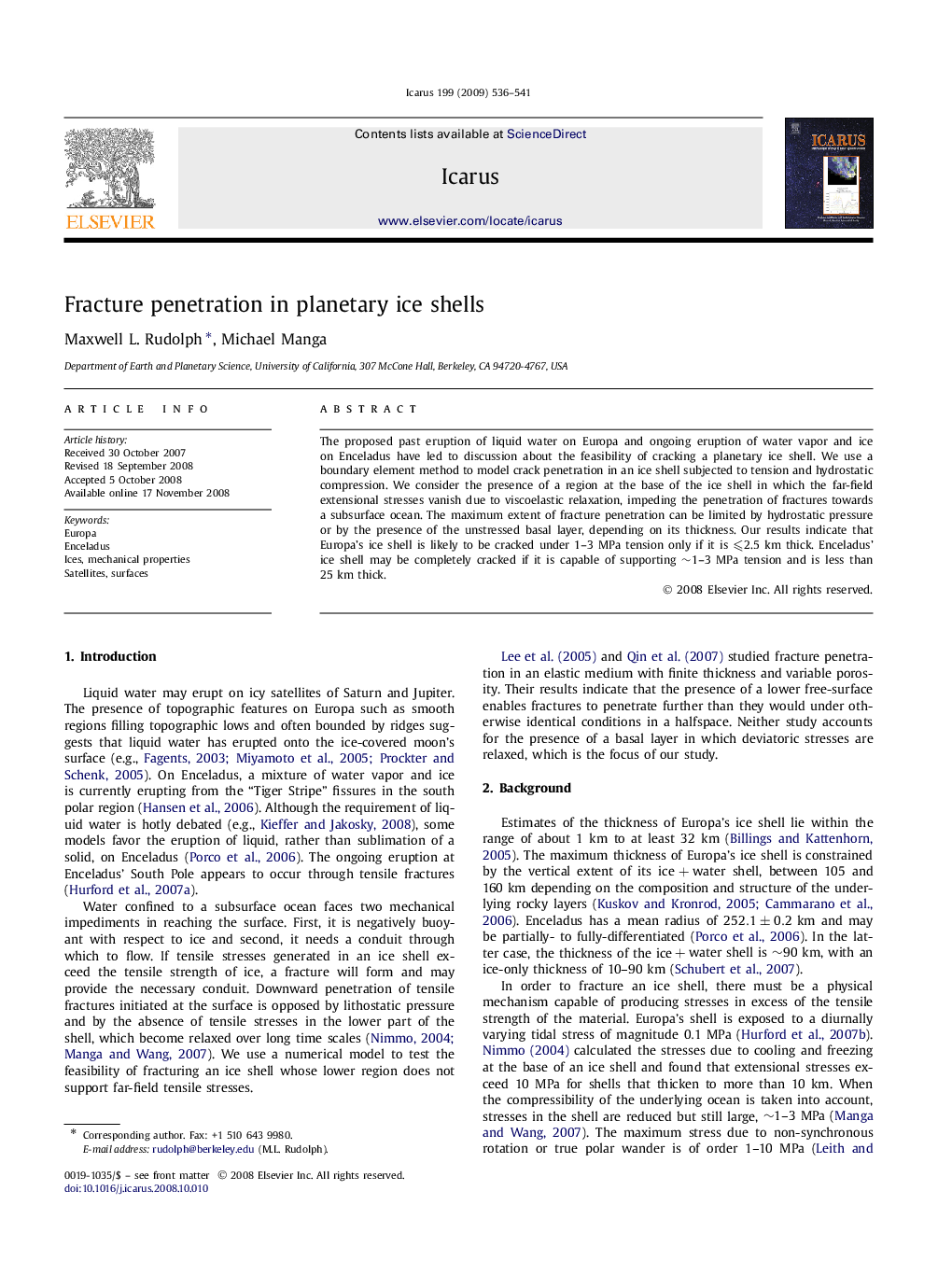| Article ID | Journal | Published Year | Pages | File Type |
|---|---|---|---|---|
| 1775551 | Icarus | 2009 | 6 Pages |
The proposed past eruption of liquid water on Europa and ongoing eruption of water vapor and ice on Enceladus have led to discussion about the feasibility of cracking a planetary ice shell. We use a boundary element method to model crack penetration in an ice shell subjected to tension and hydrostatic compression. We consider the presence of a region at the base of the ice shell in which the far-field extensional stresses vanish due to viscoelastic relaxation, impeding the penetration of fractures towards a subsurface ocean. The maximum extent of fracture penetration can be limited by hydrostatic pressure or by the presence of the unstressed basal layer, depending on its thickness. Our results indicate that Europa's ice shell is likely to be cracked under 1–3 MPa tension only if it is ⩽2.5 km thick. Enceladus' ice shell may be completely cracked if it is capable of supporting ∼1–3 MPa tension and is less than 25 km thick.
